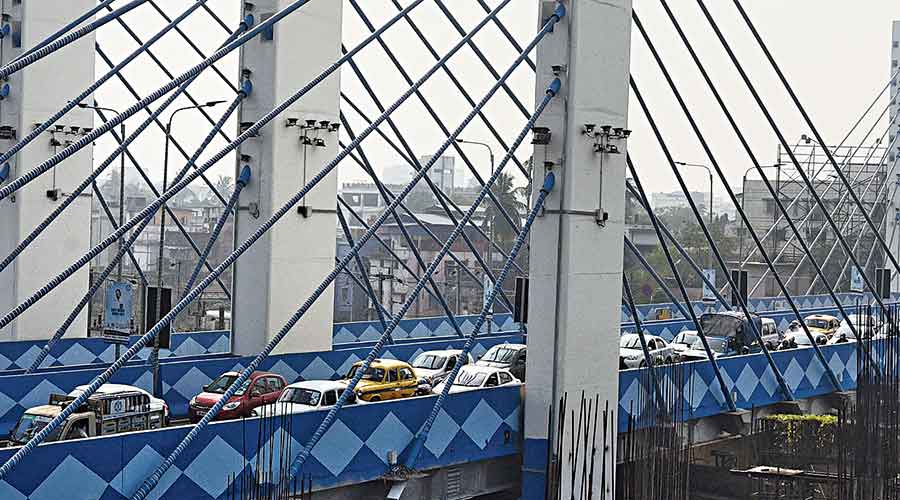Any deviation in the weight bearing capacity, any minor displacement of a bearing or any faint change in the frequency of oscillation of the cables will flash on the computer screen of engineers because of sensors installed on the Majerhat bridge.
The state government has fixed seven sensors on the bridge, spanning 650 metres over railway tracks, which will throw up different kinds of data related to the bridge's daily performance and its weight-bearing capacity so engineers responsible for its maintenance are forewarned about any deviation.
Officials of the PWD, which is responsible for the upkeep of the Rs 160-crore cable-stayed bridge, said another 45 sensors would be installed over the next two months.
This is the first time such sensors are being fitted to any bridge in Calcutta, the official said.
A consignment of sensors, made in Germany, reached the city recently.
“These are the latest of all sensors used globally. They will ensure that even the slightest of structural changes of the bridge, including its load-bearing capacity, will flash on computer screens,” said a PWD engineer.
Engineers said each component of the Majerhat bridge - which has replaced the one that collapsed in September 2018 and was inaugurated in December — has a fixed “threshold value.” The sensors, which will remain fitted on the cables, will read the value of each of these components, including the bearings, and the load-carrying capacity of the deck slab and the cables.
Engineers said that if, for instance, there was a sudden increase in the load-bearing value because of movement of heavy vehicles, the sensors will immediately send warning signals.
“Each sensor will measure stress, vibration and flexibility of the cables. In case of any change, engineers will get to know the exact location of the problem and the issue can be immediately addressed,” a PWD official at Nabanna said.
“This will reduce the time of trying to locate the problem-point. It will also make the team at work accountable.”
Members of the bridge monitoring committee, set up by the state government following the collapse of the old Majerhat bridge, said sensor-based monitoring of a bridge’s health was the globally accepted protocol.
“We will recommend the use of such sensors for a few other structures,” said a member of the committee.










